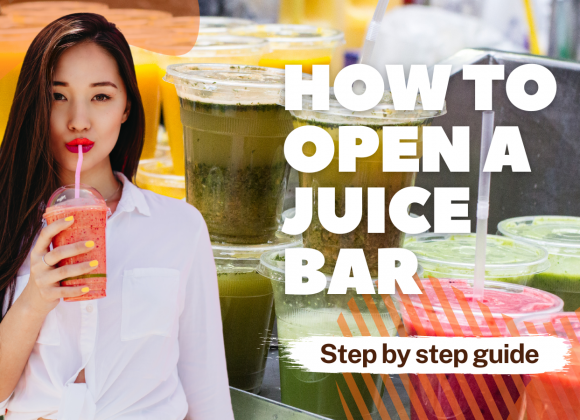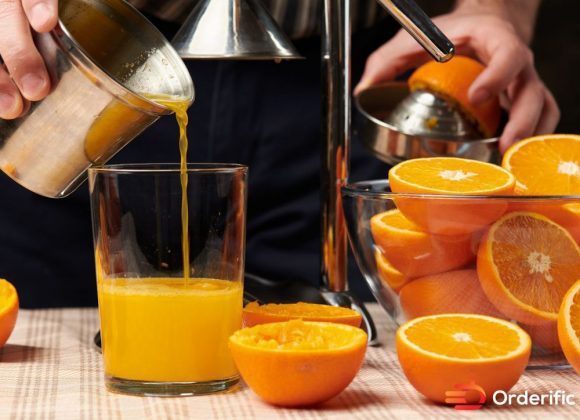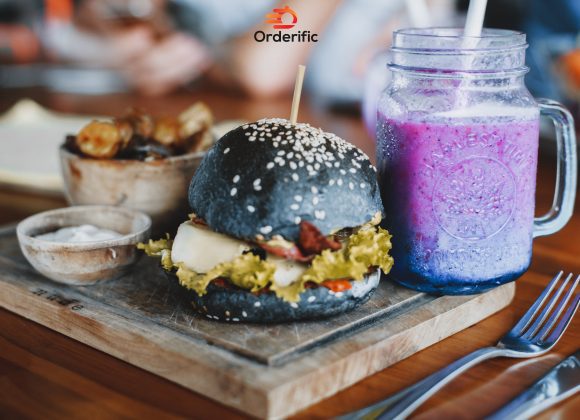Introduction
In the dynamic world of the juice bar industry, understanding customer preferences and keeping pace with the latest trends with juice bar analytics is vital. The secret to a successful juice bar business is not just serving fresh juice or delectable smoothies; it involves an intricate blend of business planning, customer analysis, and competitive advantage. In the heart of New York, from the bustling lanes hosting Smoothie King and Jamba Juice to the cozy corners of the local smoothie bars, the relevance of data-driven decisions is unequivocal. With the help of analytical cookies and Google Analytics, juice bar businesses harness personal information and visitor metrics to serve relevant ads and customized drinks. This comprehensive guide offers juice bar owners unparalleled insights, whether it’s for crafting a robust juice bar business plan, launching a marketing campaign, or enhancing customer service.
What Are The Positive Forces Propelling A New Juice Bar’s Success?
Understanding The Juice Bar Landscape
In the bustling city of New York, the juice bar industry is experiencing a boom like never before. With the advent of juice bar giants like Smoothie King and Jamba Juice, to the rise of local smoothie bars offering fresh juice and uniquely concocted smoothies, there is a definite shift towards healthier, fresher choices. This ongoing trend has led to the diversification of the juice bar business model, with businesses now offering everything from juice cleanses to fruit smoothies, demonstrating a profound understanding of customer preferences.
Leveraging Data-Driven Strategy
Crucial to the success of any juice bar business plan is the ability to understand and accommodate the changing dynamics of customer preferences. For this, the power of Google analytics and analytical cookies cannot be overstated. These tools allow juice bars to collect personal information and visitor metrics, enabling the creation of relevant ads and customized drinks. Whether the goal is to introduce new items or revamp an existing menu, customer analysis forms the cornerstone of every successful strategy.
Competitive Advantage Through Analytics
For a juice bar business to stand out amidst the competition in vibrant places like New York, leveraging a competitive advantage is key. One effective way to do so is by employing advanced analytics in the form of performance cookies. These provide insight into customer behavior, helping juice bars to optimize their marketing campaigns, and ultimately, enhance the customer experience.
Strategic Business Planning
The significance of a well-drafted juice bar business plan should not be underestimated. Such a plan should encompass every aspect of the business, from sourcing the freshest ingredients for juices and smoothies, to managing inventory, and even planning effective marketing campaigns. The incorporation of elements such as customer feedback into a juice bar business plan can result in increased customer satisfaction and higher sales.
Harnessing The Power Of Technology
In this digital age, juice bar businesses are increasingly turning to management software and POS systems for streamlined operations. From tracking sales and inventory to processing payments, these tools play a pivotal role in the smooth running of the juice bar. Additionally, online ordering systems and loyalty programs are becoming popular features that not only enhance functionality but also contribute to an improved customer service experience.
How Does Your Juice Bar Cater To Local Consumers?
The success of a juice bar business is inextricably linked to its understanding and alignment with local consumer preferences. This is especially true for juice bars in vibrant locales like New York, where juice and smoothie enthusiasts have a plethora of choices, from global brands like Smoothie King and Jamba Juice to local smoothie bars offering fresh juice. A strategic juice bar business plan that taps into the local palate and health consciousness can steer a juice bar towards success.
For instance, juice cleanses have become incredibly popular in recent years, fueling sales at juice bars that have introduced these offerings. Incorporating fresh juice and smoothie options that are based on customer analysis and feedback, can cater effectively to local consumers. Google analytics and performance cookies can be instrumental in this analysis, offering insights into customer behavior and preferences.
The importance of relevant ads cannot be overstated, particularly in an industry as competitive as the juice bar business. Analytical cookies can help businesses understand visitor metrics and personal information leading to the creation of customized ads that resonate with their demographic.
Innovative Offerings: The Key To Standing Out
In the crowded juice bar landscape, uniqueness is a competitive advantage. Offering an extensive variety of smoothies and fresh juice options, with exciting flavors and freshest ingredients, can set a juice bar apart. For instance, a juice bar might consider introducing a new menu item like a ‘Hugo Spritz,’ a refreshing cocktail made with St Germain elderflower liqueur, which could be a hit in the summer months.
Incorporating Technology: The Forward Path
Embracing technology can enhance the functionality of a juice bar immensely. From a robust POS system for efficient inventory management and payment processing, to an intuitive online ordering system for a seamless customer experience, technology plays a crucial role in modern juice bar management. Loyalty programs, for example, can help in retaining customers and encouraging repeat visits.
In conclusion, a juice bar business plan that is locally-focused, innovative, and technologically-advanced can pave the way for success in the juice bar industry. And, to achieve this, there’s no underestimating the power of insights, analytics, and a clear understanding of customer preferences.
The Power Of Data In Juice Bar Management
The art of running a successful juice bar lies not just within the concoction of vibrant, refreshing juices and smoothies but also in understanding the preferences of your customers. To resonate with your customer base, it’s imperative to comprehend what flavors they prefer, the health benefits they are seeking, and the kind of experience they anticipate. This information is the secret ingredient to your juice bar’s success, and the utilization of data analytics offers a practical, efficient means of obtaining these insights.
Data, in this context, primarily refers to customer behavior patterns, preferences, and feedback. This information forms the foundation upon which you can build your juice bar business plan. Tools such as Google Analytics provide a window into your customers’ online journey, allowing you to understand how they interact with your website, what products they are interested in, and what feedback they are providing. This information is invaluable because it can help you tailor your offerings to meet the precise needs of your customers.
Data-Driven Decision Making: A Game Changer
The use of data in decision-making is transforming the way juice bar businesses operate, particularly when it comes to menu planning and marketing. By analyzing the popular items, you can identify which juices and smoothies are most preferred by your customers. Similarly, feedback on new introductions can guide you on whether to make them a permanent fixture or to tweak them to better suit consumer tastes.
Moreover, data can help you understand the effectiveness of your marketing campaigns. For instance, an analysis of website traffic can reveal which campaigns are driving more visitors to your site or which social media posts are generating the most engagement. This intelligence can shape your future marketing strategies, helping you allocate resources effectively and get the highest return on your marketing investment.
Leveraging Technology For Inventory Management
In addition to understanding customer preferences and shaping marketing strategies, data can also be instrumental in managing inventory in your juice bar. Inventory management is a crucial aspect of running a juice bar business, with wasted product being a significant drain on profits. By leveraging data, you can predict which ingredients you’ll need more of and which ones aren’t as popular. This analysis can help you manage your inventory more effectively, reducing waste and saving costs.
Enhancing Customer Experience With Data
Lastly, but most importantly, data can be harnessed to improve the customer experience at your juice bar. By understanding customer preferences, you can tailor not just your menu but also the entire experience to meet their expectations. For instance, if data reveals that your customers prefer a quick, grab-and-go style service, you can streamline your operations to cater to this need. If customers show a preference for a relaxed, sit-down environment, you may want to consider adding more seating or enhancing the ambiance of your juice bar.
In conclusion, data has the potential to be a game-changer for your juice bar business. By leveraging insights into customer preferences, marketing effectiveness, inventory management, and customer experience, you can craft a robust and successful juice bar business plan that sets you apart from the competition. The juice bar landscape might be crowded, but with data on your side, you can carve out your unique space.
Key Metrics For A Successful Juice Bar
Sales Metrics
Monitoring sales is crucial in any business, including a juice bar. Carefully tracking your sales allows you to understand which products are popular and which ones are underperforming. This means focusing on detailed metrics such as the number of drinks sold, the sales of each drink type (juices, smoothies, etc.), and the sales during different times of the day.
Customer Metrics
Understanding your customers is key to running a successful juice bar. Metrics such as the number of new versus returning customers, customer preferences, and customer feedback can provide valuable insights. Collecting these data points can help you tailor your offerings and services to meet customer needs.
Operational Metrics
Operational metrics involve tracking the efficiency of your business operations. This includes inventory turnover (how often you need to restock), waste percentage (how much product is wasted), and labour costs. These metrics can help identify areas for improvement in your operational efficiency.
Marketing Metrics
Lastly, monitoring the effectiveness of your marketing efforts is essential. This includes tracking metrics like website traffic, social media engagement, and the success of promotional campaigns. Understanding these metrics can help to refine your marketing strategy and maximize return on investment.
In conclusion, paying attention to these key metrics can provide invaluable insights, helping to drive decision making and ultimately leading to a more successful juice bar.
Analyzing Customer Trends And Preferences

The world of juice bars is dynamic, with customer trends and preferences constantly shifting. This means that staying attuned to customer trends is not just beneficial, but essential for the success of a juice bar. Understanding what your customers want, their favorite flavors, their health aspirations, and their expectations can make the difference between a thriving juice bar and one that struggles to attract clientele.
The importance of understanding and aligning with customer preferences cannot be understated. For instance, with the rising trend of health consciousness, people are increasingly seeking out juice bars that offer a diverse range of fresh, organic juices and smoothies. Not just that, customers are also showing a preference for juice bars that provide customizable choices, allowing them to tailor their drinks to their specific dietary needs and preferences.
The Role Of Data In Understanding Customer Trends
How can a juice bar keep a finger on the pulse of these changing customer trends? The answer lies in data. With the help of data analytics, juice bars can gain a deep understanding of their customers’ behaviors, tastes, and preferences. They can track which drinks are most popular, when customers typically visit, and which marketing tactics are most effective.
Data from social media can tell you which of your posts are resonating with your audience, giving you an indication of what kind of content or promotions might drive customer engagement.
Using Customer Feedback To Stay Aligned With Trends
Another crucial way to stay aligned with customer trends is by actively seeking and utilizing customer feedback. Customers often appreciate having their opinions heard and valued, and their insights can be priceless. Regularly asking for feedback and reviews, and acting on this information can help you adjust your offerings in alignment with your customers’ evolving tastes.
For instance, if multiple customers give feedback about wanting more vegan or gluten-free options, you may want to introduce these into your menu. Similarly, if customers appreciate a particular promotional offer, you might consider making it a regular feature.
Innovation: The Key To Staying On Top Of Trends
In addition to understanding and aligning with customer trends, innovation is a key factor in staying relevant in the ever-evolving juice bar landscape. This could mean introducing new, exciting flavors, experimenting with unique ingredients, or offering innovative services such as subscription models or juice cleanse programs.
Innovation not only helps in attracting customers but also in differentiating your juice bar from the competition. So, whether it’s a new fruity concoction, a nutritious green smoothie, or a novel service, innovation can play a big role in keeping your juice bar on top of customer trends.
Increasing Efficiency And Profitability
Efficiency and profitability are fundamental aspects of running a successful juice bar. Leveraging data analytics can play a pivotal role in enhancing these aspects. By analyzing sales data, you can determine which juices and smoothies are most popular and at what times, allowing you to optimize your menu and reduce waste. Operational metrics such as inventory turnover and waste percentage offer insights into areas where efficiency can be improved, subsequently increasing profitability.
Feedback from customers can help tailor your offerings and services to meet their needs, enhancing customer satisfaction and encouraging repeat visits. Monitoring marketing metrics helps determine which campaigns are effective, enabling you to allocate resources efficiently for maximum return on investment.
Innovation is also crucial in staying relevant and competitive. By introducing new flavors, unique ingredients, or innovative services like subscriptions or juice cleanse programs, you can differentiate your juice bar and attract more customers. With the help of data analytics, insights, and innovative strategies, a juice bar can increase efficiency and profitability, ensuring sustained success in the competitive landscape.
Conclusion
In the highly competitive world of juice bars, the key to success lies in understanding customer preferences, driving operational efficiency, and fostering innovation. Embracing data analytics equips you with the insights needed to craft a compelling juice bar business plan that resonates with customer needs and stands out in the marketplace. By focusing on sales, customer, operational, and marketing metrics, you can uncover opportunities to enhance the appeal of your menu, improve operational efficiency, and refine marketing strategies, thereby boosting profitability. Furthermore, staying attuned to evolving customer trends and fostering innovation can ensure your juice bar stays relevant and appealing to your target audience. Remember, your juice bar is more than just a place that serves juices and smoothies; it’s an experience that can be augmented with the power of data. To learn more about how data analytics can revolutionize your juice bar, schedule a demo with Orderific today.
FAQS
What are the benefits of using insights and analytics in a juice bar business?
Insights and analytics aid in understanding customer preferences, improving operational efficiency, refining marketing strategies, and increasing profitability.
How can I collect and analyze data to improve my juice bar’s performance?
You can use digital tools like Google Analytics, customer feedback, and social media metrics to collect and analyze data.
Are there specific tools or software recommended for juice bar analytics?
Yes, software like Orderific, Square for Retail, and Vend are highly recommended for juice bar analytics.
How do customer preferences and trends affect menu decisions in a juice bar?
Customer preferences and trends greatly influence the selection and customization of juices and smoothies in the menu.













